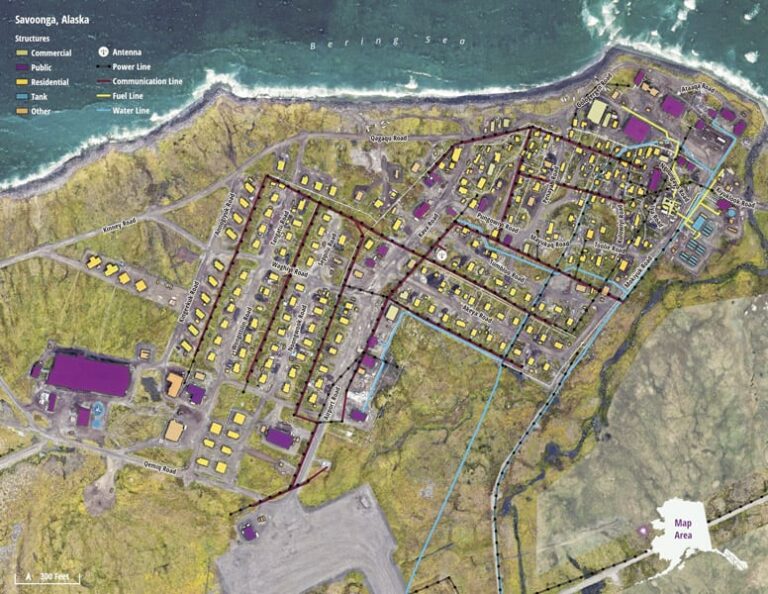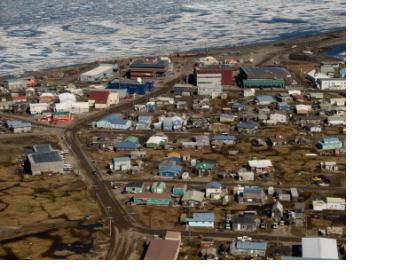Esri, NOAA, and Dewberry have joined forces to modernize mapping across 64 remote and underserved communities in Alaska. Many of these communities are located in the state’s vast Unorganized Borough, which covers nearly half of Alaska and has limited local government capacity. Reliable maps are often outdated or incomplete, leaving significant gaps in planning and emergency response.
To address this challenge, the project used geospatial artificial intelligence (GeoAI) and data from the ArcGIS Living Atlas of the World. AI-driven tools were applied to satellite and aerial imagery to automatically extract key features such as building footprints, utilities, land ownership boundaries, cultural resources, and harvest areas. These enriched datasets give communities a stronger foundation for disaster preparedness and local development.

“This project provided an opportunity to build a strong foundation of infrastructure while combining local knowledge, emerging technology, and thoughtful cartography,” explained Hillary Palmer, program manager at Dewberry.
The updated maps will help communities prepare for emergencies, strengthen resilience, and apply for grants that require accurate infrastructure data. They also offer a valuable resource for decision-makers who need timely and reliable geographic information to manage risks.
For UN-SPIDER, this initiative illustrates the potential of GeoAI and space-based data to support disaster risk reduction in isolated and vulnerable regions. It highlights how partnerships between government agencies, private sector experts, and local stakeholders can accelerate access to critical geospatial information.
The Alaska project serves as a practical example of how emerging technologies can bridge data gaps and strengthen resilience, aligning with global efforts under the Sendai Framework for Disaster Risk Reduction and the Sustainable Development Goals.
Image credit: For remote Alaskan communities, a lifeline comes from the sky, The Seattle Times.

